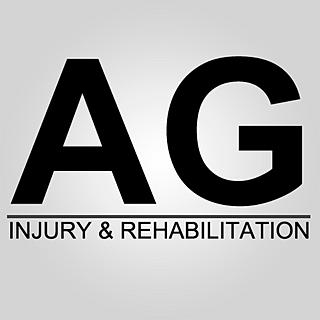"Frozen Shoulder" - What is it? How do you treat it?
- Arun Gray
- Mar 20, 2017
- 3 min read
What is a Frozen Shoulder?
Otherwise known as Adhesive Capsulitis, a frozen shoulder is where the shoulder capsule and surrounding ligaments become inflamed, swollen, red and contracted. This severely restricts the movement available at the shoulder which is otherwise flexible in multiple directions. The lack of elasticity causes pain and stiffness.

The development of frozen shoulder is explained in three stages:
1. Freezing - pain is present at the shoulder, followed by a decrease in range of movement. Otherwise known as the "Red Phase" due to the colour of the capsule when an arthroscopy is undergone.
2. Frozen - minimal pain with no additional decrease in range of movement. Known as the "Pink Phase" again due to it's colour under athroscopy.
3. Thawing - range of movement is gradually increased. Weakness may be noticed as the shoulder will have been inactive and underused for a period of time; causing muscular atrophy. Otherwise known as the "White Phase" for the same reason.

Signs and symptoms of a frozen shoulder
A therapist will undergo subjective and objective assessments of your injury. This is where they will ask you about the pain patterns, what helps it or makes it worse, and what movements are painful. They will then perform a few tests to confirm their diagnosis.
A frozen shoulder usually isn't painful to touch and strength of your rotator cuff muscles should not be weak however pain of movement will prevent them from contracting maximally.
Common issues include:
Unable to reach above shoulder height
Unable to throw a ball
Unable to quickly reach for something
Unable to reach behind your back eg bra or tuck shirt
Unable to reach out to your side and behind. eg reach for seat belt
Unable to sleep on your side
Treatment and rehabilitation
Treatment of a frozen shoulder depends on what stage you are at.
During the first stage (frozen) light mobilisations can be performed to increase the range of movement available at your shoulder. Muscle release techniques and stretching will also help the relief of tight muscles surrounding the joint along with kinesiology taping. It is important not to aggravate the joint at the first stage as this will increase the inflammation of the ligament and further irritate the condition. Treatment must be gradual and progressive to ensure your rehabilitation is efficient.
The aims of the second stage (freezing) are to regain the function of the shoulder. The techniques here will be similar to those used in the first stage however they will be slightly more difficult and more challenge than those in the frozen stage. However, it is still important that the exercises and stretches do not aggravate the condition and increase inflammation further.
If your shoulder is at the early stage or a frozen shoulder or late stage of rehab, which ever way you look at it (thawing) range of motion exercises and stretches are best to get your shoulder back to feeling "normal" again. As your range of motion increases, you will need to strengthen your shoulder in the increased range. This is especially important if you have regained your range following a period of inactivity where strength will have been lost.
A frozen shoulder is just one of a number of potential conditions you may have if you are suffering with an undiagnosed shoulder injury. Contact a sports therapist or physiotherapist to book an injury assessment before starting any unsupervised exercises.







Comments